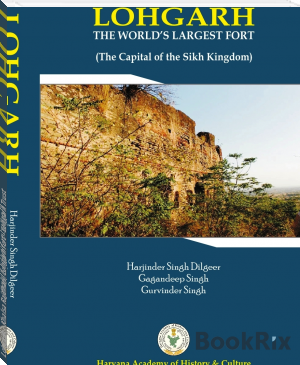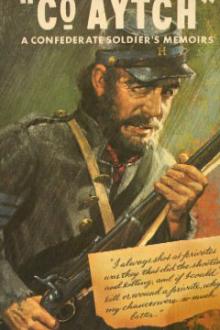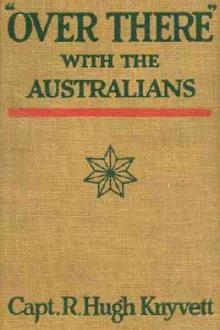Lohgarh - Khalsa Rajdhani, Lohgarh fort - Lohgarh Trust by S. Daljeet Singh Bajwa (books that read to you .TXT) 📕

- Author: S. Daljeet Singh Bajwa
Book online «Lohgarh - Khalsa Rajdhani, Lohgarh fort - Lohgarh Trust by S. Daljeet Singh Bajwa (books that read to you .TXT) 📕». Author S. Daljeet Singh Bajwa
structure.
26
Ambala
Saha
Nagla
available
27
Ambala
Saha
Bhita
available
28
Ambala
Saha
Landa
Non available
29
Ambala
Saha
Khesri
Non available
30
Ambala
Saha
Durala
Non available
31
Ambala
Saha
Samlheri
Non available
32
Ambala
Saha
Nohni
Non available
33
Ambala
Shahjadpur
Korwa
available
34
Ambala
Shahjadpur
Karsan
available
35
Ambala
Shahjadpur
Kadhouli
available
36
Ambala
Nariangarh
Tandwal
Non available
37
Ambala
Nariangarh
Badragarh
Non available
38
Ambala
Nariangarh
available
39
Panchkula
RaipurRani
Ratur
available
40
Panchkula
RaipurRani
Hangoli
available
41
Panchkula
RaipurRani
kot Gangeshara
Non available
42
Kurukshetra
Babian
Babian
available
43
Kurukshetra
Babian
Lakhmari
Non available
44
Kurukshetra
Babian
Buhavi
Non available
45
Kurukshetra
Babian
Sangor
non available
46
Kurukshetra
Ladwa
Ladwa
available
47
Kurukshetra
Ladwa
Niwarsi
Non available
48
Kurukshetra
Shahbad
Karindwa
Non available
49
Karnal
Indri
Sangoha
Non available
50
Karnal
Indri
Bairsal
available
51
Karnal
Indri
Baina
available
52
Karnal
Indri
Garhpur Khalsa
Non available
State of Garhwal and the Sikhs
On June 1634, Guru Hargobind Sahib visited Garhwal on his way to Gorakhmatta (now Nanakmata). Here, he met Rani Karnavati, widow of Mahipat Shah, Raja of Garwal (1622-1633) and Samrath Ram Das (the mentor of Shivaji Maratha). Samrath Ram Das learnt lessons in polity from the Guru (which he, later, taught to his disciple Shivaji Maratha).1
Raja Mahipat Shah’s son Prithivi Shah was only eight years old when Guru Hargobind visited Garwal, and, his mother, Rani Karnavati was looking after the Kingdom of Garhwal. After Guru Sahib’s visit the morale of queen became up and she became bold to face any odds. Rani Karnavati for many years successfully defended the kingdom against the invaders and repelled the attack of the Mughal army, led by Najabat Khan sent by Emperor Shah Jahan, in 1640. In those times she was known by the nickname of ‘Nakti Rani’ as she used to chopps off the noses of any invader to her kingdom. In 1654 Shah Jahan despatched an expedition to coerce Raja Pirthi Shah, which ended in the separation of Dehra Dun from Garhwal.2 In May 1657, a major battle between Dara Shikoh’s army and Aurangzeb army took place at Shamugarh, which resulted into Aurangzeb victory. On 29 May 1658 Suleiman Shikoh son of Dara Shikoh took refuge in Garhwal, since Aurangzeb had prisoned his father Emperor Shah Jahan and had launched war against his brothers. Guru Har Rai had a large army of Sikh soldiers. He supported the moderate Sufi-influenced Dara Shikoh instead of conservative Sunni- influenced Aurangzeb as the two brothers entered into a war of succession to the Mughal Empire’s throne.
State of Garhwal and the Sikhs u 239
When Suleiman Shiloh took refuge in Garhwal, Guru Har Rai was at Thapal, in the old state of Nahan/Sirmaur (1645-1657), and this place is quite near to Garhwal. In 1658, in order to help Dara Shikoh, the Guru left Thapal and reached Goindwal, along with 2200 cavalry. Raja Rajrup of Nurpur (1646-1661) also came to help the prince, but as Prince Dara was highly disheartened, they had to go back. In 1659, Dara Shikoh was captured and beheaded by his younger brother Aurangzeb.
Raja Pirthvi Shah of Garhwal continued to provide the asylum to Suleiman Shikoh, and Aurangzeb tried his level best for the get Suleman, but Raja of Garhwal stood firm and did not hand over him (Suleman) to the Emperor. Raja Jai Singh Mirza tried to intervene in the matter, but Garhwal Raja refused to oblige. After many efforts, and against the wish of the Raja of Garhwal, Suleiman Shikoh surrendered before Aurangzeb in 1661.
In 1661-1662 Raja of Garhwal died (40 years old), Suleiman Shikoh died (28 years old), Guru Har Rai died (32 years old) and Raja of Nurpur died (40 years). Mystery surrounds the deaths of these personalities in the same year and most of them at a young age. Some people doubt that it was the result of a conspiracy by Aurangzeb.
Uttrakhand and the Vanjaras
Hiuen Tsiang did not mention any cities which can be identified as lying within the present district of Dehradun; and tradition asserts that they remained without inhabitant , until the eleventh century, when a passing caravan of Vanjaras struck with the beauty of the country , permanently settled on the spot .3 If we look back at the Sikh history, Guru Nanak Sahib during his first Udasi, took a southerly route from Gorakh Matta, which brought him to the Tanda Vanjara, near Bareilly, division Moradabad, the home town of Vanjara traders. These Vanjaras embraced Sikhism and followed the path of truth. Guru Hari Rai Sahib increased the Sikh preaching centres from 22 to 3604 and new centres were also established in the estate of Nahan, Garwal, Sarkar of Saharanpur and Moradabad. The Sikhs made Fortification (some of the Fortress still exist & archaeological evidences related to Bhai Lakhi Rai
240 u Lohgarh : The World’s Largest Fort
Vanjara are found on the ridge and both on back and front plains of the ridge), on the ridge started from Yamuna river to Ganga River (via Deradun–Haridwar). Sikh history is necessary to narrate here, as the militarization of Vanjaras made by different Sikh Gurus to uproot the Mughals oppressions. With the help of the Srinagar-Garhwal Chiefs and the Vanjaras, Banda Singh Bahadur marched and aspired to invade as far as the territory of sarkar Moradabad and Chakla Bareilly in Subha Delhi. 5 (This event is of 1712; and, at that time Garhwal Hill chief was Fateh Shah and he was the same Raja as had attacked Guru Gobind Singh at Bhangani on 18 September 1688 as a result of some misunderstanding, but later he sided with Banda Singh because he had realized that the Guru’s war was against injustice, and, the Mughals were the oppressors of the people; hence he joined hands with Banda Singh to uproot the Mughals. There are reports of 40000 Sikhs moving about in Garwal hills.6 Banda Singh had full knowledge about this area and moved very fast in hills and attacked sarkars and praganas in the west Uttar Pradesh.
Endnotes
Harjinder Singh Dilgeer, Sikh History, vol 1, p. 265. The Imperial Gazetteer of India, Dehradun, 1909 11, p. 165. The Imperial Gazetteer of India, Dehradun, 1909 11, p. 212. Harjinder Singh Dilgeer, Sikh History-1, p. 280. Entries in Akhbarat-i-Darbar-i-Mualla. Veena Sachdeva, Article-Historical Geography of Baba Banda Singh Bahadur, in Revisiting Baba Banda Singh Bahadur and his time, edited by Amarjeet Singh, p
Folk Song on Bhai Lakhi Rai Vanjara
Sab that pada rah javega, Jab lad chalega banjara, Tu hai Lakkhi banjara, Tanda tera bhari hai,
Gophal dilme mat rahana tu, Bahot bada beopari hai (1)
Namakka, misri, kandgiri, phauhi saman rakhata hai, Ganim tuze ghabarata hai (2)
Beopar tera sachcha hai, Aor khudaka tu hai pyara, Lakha ashrafi, lakkhi tole, Kon karega bevhara (3)
Nur gajarka tane lagi, Vemne kaptase mara gaya,
Vo nayak tha merahi dhani (4)
Jab aankajaki chot padi, Roneka macha hari gul sara, Samsher bhaloka mara (5)
Bhai Lakhi Rai Vanjara marches with his goods leaving his belongings. The Tanda of Lakhi Vanjara was huge in size should always be alert, being a big trader. The song continues praising the bravery of Vanjara community.
Glossary
Ahdi The ahadis were cavalrymen directly employed in the Imperial service (designated mansab- holders of one ahad). Their horses, equipment, etc., were checked and the pay fixed thereon by the bakhshi-i-ahadian, or bakhshi of ahadis, who in turn worked under the mir bakhshi.
Akal Takht Immortal Throne. A building facing the Dabar
Sahib in Amritsar, where Sikhs gather for political purposes.
Amar Velan Hanging vines holding which one can fly from one
tree to another or from one hill to a tree or another hill.
Amin of a subha Amin was a term employed for land-surveyor,
later (under shah jahan) for revenue-assessor. But the amin of the subha under Akbar and Jahangir was an official charged with ensuring that the land revenue was assessed and collected, particularly by jagirdars, in accordance with imperial regulations.
Amin-un mulk Head of the amins of a province at the court, and
thus charged with ensuring equity and obedience to imperial regulations in the assessment and collection of land-revenue.
Amir Noble (Its plural is umra).
Bahadur The Honourable, the sixth highest title conferred
by the Mughal and other important Muslim courts. Often added to more important honour to enhance them by one degree. Also a title of honour conferred on recipients of the second class of the Order of British India (OBI).
Bakhshi of ahadis See: ahadi.
Bhai It means brother/ brethren. Guru Nanak addressed his followers as Bhai.
Chakk Nanaki Old name of Anandpur Sahib.
Chowkis Bastions.
Durbar Royal court, an important ceremonial held in the audience hall of a ruler to hear petitions and accounts, make investitures or official appointments, receipt and giving of presents, official letters, etc.
Farmans Imperial orders
Faujdar Commandant of territory, in charge of law and order.
Garh Fort or stockade.
Garhi Fortress
Gurdwara Literally “Door of the Guru.” Any building or room
dedicated to housing the devotional songs of the Guru for the purpose of spiritual practice.
Guru-da-Chakk Old name of Amritsar.
Jagirdar Fief holder/ Feudal Lords .
Jang War or battle, a suffix used as part of the fifth
highest title conferred by the Mughal and other important Muslim courts
Khalsa Rajdhani In 1710, Baba Banda Singh Bahadur declared
Lohgarh as the capital of the Sikh Kingdom.
Khalsa Takhat Literally: Sikh seat of power. In 1710, Baba Banda
Singh Bahadur issued coins of Sikh Raj and on the back side of the coin, mentioned Lohgarh as Khalsa Takht.
Khalsa Literally: “land belonging to the / sovereign;” In Sikh meaning: the collective body of all initiated Sikhs, who agree to live by the highest ideals of Sikh principles. Committed to one’s own purity of consciousness and actions.
Khan-i-Khanan Chief of chiefs.
Khillat Dress of honour of a specific valour, usually consisting of a turban, shawl and pieces of unstiched cloth, sometime also including arms, jewels and other valuables. Presented on great occasions, such as a ceremony of installations.
Kotwal Head of the town or city police.
Kshatriya Hereditary Hindu military and ruling caste.
Mansabdar Holder of a military command over horse or foot,
usually awarded together with estates or revenues for their upkeep.
Mir bakhshi Incharge of awarding mansabs and checking
mansabdars ontingents through the dagh system; and controller of intelligence.
Mir-i-atish Chief of the artillery.
Nanakprast The term used by the Mughals for the Sikhs.
Nayaks The leader of the Tanda (trading unit of Vanjaras). Bhagat Kabir in Guru Granth Sahib has discussed nomenclature of Nayak and Vanjaras.
Padshah Persian term for Emperor.
(or Badshah)
Pargana Administrative unit within a provinces or state,
dating from the Mughal period.
Pir or Peer Sufi master or spiritual guide equally used in the
nath tradition. They are also referred to as a Hazrat or Shaikh, which is Arabic for Old Man.
Qanungo of Sarkar Hereditary keeper of revenue accounts, playing
a very important role in helping jagirdars or their agents to draw up revenue assessments of parganas.
Qazi One learned in Islamic law, Shariat
Rangar Rajput converted into Muslims.
Risala Troop of cavalry.
Sarkar Administrative Unit of Mughals larger than pargana and smaller than Subha.
Sayyid A male descendant of Ali (Prophet Muhammad’s
(or Syed/Said) son-in-law) also used as given or surname.
Shahzada Son of a Shah (Emperor), prince.
Shiqdar Revenue collector; later also used for revenue- official under a jagirdar.
Sikh Literally “disciple.” According to the Sikh Rehat Maryada, a Sikh is someone who believes in God, the ten Sikh Gurus and Guru Granth Sahib; and follows no other religion.
Subedar The governor of a subha (province).
Tanda Trade caravan During the Medieval Age, this was the main
trading unit and means of transportation of goods, in the Central and South Asia. It comprised of thousands of bullcarts, horses, camels, buffaloes and other animals. Now some villages and towns are also known as Tanda (these were the halting stops of the tandas.
Vaheguru Ji Traditional Sikh greeting, which
Ka Khalsa
Vaheguru Ji Means “My Purity belongs to God, My Victory
Ki Fateh! belongs to God.”
Vakil (or Wakil) Agents of the princely states present in the court
of Mughal Emperor.
Vanjara Literaly: a trader. This was the richest community of the world up to the





Comments (0)